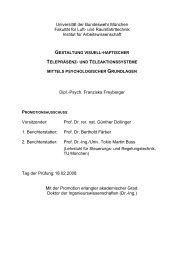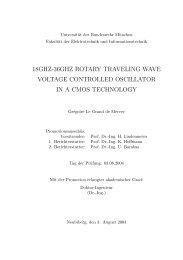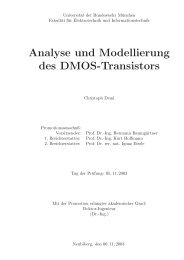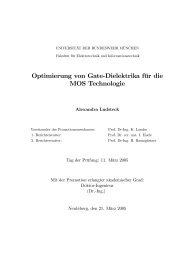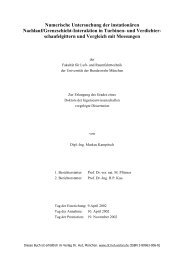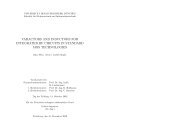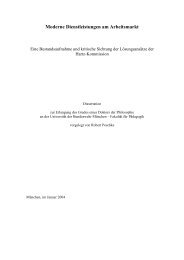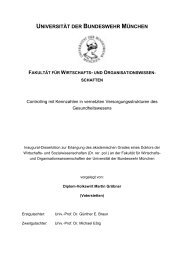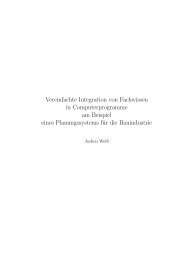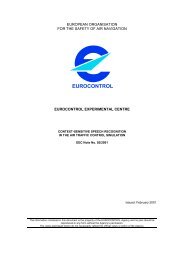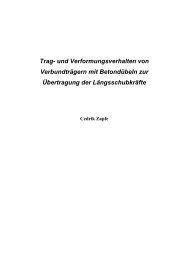Precise Orbit Determination of Global Navigation Satellite System of ...
Precise Orbit Determination of Global Navigation Satellite System of ...
Precise Orbit Determination of Global Navigation Satellite System of ...
You also want an ePaper? Increase the reach of your titles
YUMPU automatically turns print PDFs into web optimized ePapers that Google loves.
Chapter 9 S<strong>of</strong>tware and Simulation Results<br />
perturbation effects on the satellite orbit such as geopotential attraction (n, m ≤ 10), solar and lunar attraction and<br />
solar radiation pressure are included in the satellite dynamic model. The observation is a one-way carrier phase<br />
that is generated from the integrated theoretical orbit and the known coordinates <strong>of</strong> tracking stations described in<br />
§9.1.2. The white noise with σ = ±1 cm are added to carrier phase observation. The elevation cut-<strong>of</strong>f angle <strong>of</strong><br />
observation is 15°. The sample rate is 10 minutes.<br />
When observations are discontinuous due to the elevation mask limitation, new ambiguities <strong>of</strong> carrier phase<br />
observations will be added and solved during the orbit determination process. In the satellite dynamical models<br />
<strong>of</strong> orbit determination, the perturbation effects included are the same as those used for the theoretical error-free<br />
orbit integration, but there is a difference, for example, the degree and order <strong>of</strong> geoperturbation used in orbit<br />
determination are less than those used to determine the theoretical orbit. The accuracy <strong>of</strong> orbit determination is<br />
obtained using differences between the results <strong>of</strong> orbit determination and the theoretical error-free integration<br />
orbit.<br />
9.3.1 <strong>Orbit</strong> <strong>Determination</strong> with Float Ambiguity Solution<br />
9.3.1.1 The Accuracy <strong>of</strong> <strong>Orbit</strong> <strong>Determination</strong> without <strong>Satellite</strong> Visibility<br />
Considered<br />
The distribution <strong>of</strong> tracking stations used for orbit determination using carrier observations are drawn in Figure<br />
9-2. In the following simulation results, the carrier phase observations are assumed to be continuous. The<br />
satellite visibility problem and cycle slips are not considered. All observations have to be set with true initial<br />
ambiguities according to their tracking stations as listed in Table 9-2.<br />
Table 9-2 TRUE INITIAL AMBIGUITY SET FOR TRACKING STATIONS<br />
Tracking Station True Initial Ambiguity Set(Cycles)<br />
Herstmonceux 20<br />
Azoren 40<br />
Kreta 60<br />
Maspalomas 80<br />
Kourou 100<br />
Libreville 120<br />
Hartebeesthoek 140<br />
Perth 160<br />
Float ambiguity solutions <strong>of</strong> IGSO satellite located at λ = -10° are shown in Figure 9-21 to Figure 9-28.<br />
Ambiguity<br />
21<br />
20.8<br />
20.6<br />
20.4<br />
20.2<br />
20<br />
19.8<br />
19.6<br />
19.4<br />
19.2<br />
19<br />
0 24 48 72 96 120 144 168 192 216 240<br />
Tim e (hour)<br />
Figure 9-21 Float Ambiguity Solution <strong>of</strong> Tracking Station 1<br />
123



